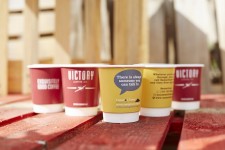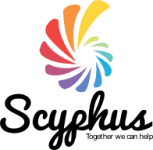Paperboard Packaging Market Poised to Exceed USD 240 Billion by 2024

LITTLE HOUGHTON, England, October 24, 2017 (Newswire.com) - Scyphus purchases specialised food grade paperboard, PE coated and uncoated both, and as per Leslie Carr, they have to keep an eye on the trends in paperboard prices and futures, Scyphus being a manufacturer of branded coffee cups and other printed paper cups like branded ice cream cups and pasta pots, they need to buy and import high-quality paperboard in bulk from FSC and PEFC certified paper mills, and price sensitivity is important to them. For Leslie, the industry is growing as per data, and will keep growing and thus keeping costs of manufacturing within predictable limits in the near future. He writes further on the trends.
The worldwide packaged food industry is witnessing a paradigm shift. Odd working hours and tight schedules, e-commerce as well as increased income level have given rise to new habits such as home delivering and on-the-go, and these habits are, on their turn, boosting the packaged food industry and the paperboard packaging market. It is expected that by 2024, the paperboard packaging market value will exceed $240 million, as put forward by recent findings of Global Market Insights.
The food packaging industry is being forged on strict environmental and health standards
Packaging plays a key role in products as its visual aspects grab the attention of clients and tempts the latter to buy. In brief, it acts as a brand ambassador. The rising purchase parity is pushing the packaging industry to grow at an exponential rate. Several factors, such as round-the-clock working hours, e-commerce as well as higher income levels are the main factors fuelling this industry. In 2016, the paperboard packaging market size was valued over $130 billion. It is expected that this figure will almost double by 2024.
The packaging industry is also witnessing some intrinsic powerful changes. The concern for environmental conservation and the need to reduce ecological footprints are urging sustainable packaging to grow rapidly, propelling the whole market to leave fewer environmental impacts. Apart from environmental concerns, health issues are also a key driver in this sector. As food safety grades and standards are being promulgated and reinforced, paperboard packaging is receiving great importance. Waste paper is undergoing various processes such as collecting and sorting before being blended with virgin fibres for the production of new materials with enhanced properties.
The lightweight features and recycling nature of paperboards are also pushing manufacturers to choose them over plastics that bear environmental hazards. As governments are supporting recycling of paper, the paperboard packaging industry is expected to enjoy new growth opportunities in the years to come.
A stable trend towards sustainable packaging
Packaging is being scrutinized intensely along the whole supply chain, starting from the raw materials to end-of-life processes. This attention has forced players in the industry to make significant advances in sustainability to respond to consumer demand and to respect various standards and regulations imposed by authorities. As such, sustainability is no longer just another added attractive feature but a necessity, helping to attract consumers while protecting market share.
Sustainable packaging is seen as part of a greater solution in achieving a resource-efficient society. Contributing to sustainable production and consumption, it helps in reducing product waste while protecting resources. Hence, packaging are recommended be designed holistically together with the product to minimize spoilage, wastage and damage. In fact, according to a report by Goldstein Research, 55% of fruits and vegetables produced in Europe are wasted every single year despite a considerable level of awareness.
In the EU only, there are over 33 sustainability and environmental protection directives and programs targeting packaging. These regulations and decisions emerged from concerns over litter, recycling and waste diversion from landfills. Life cycle analysis of not only the packaging on its own, but together with the product, is carried out as a key method for evaluation and comparison.
Advanced smart packaging is also helping in ensuring freshness and consequently, extending shelf life of food. From farm to fork, food waste can thus be minimized. Similarly, e-commerce, as well as the need to connect areas with food-supply demands that packaging allow for safe and efficient transport.
Key trends morphing the food packaging industry
The Global Packaging Trends 2017 released by Mintel delves into the key “emerging, morphing and mainstreaming packaging trends” impacting on consumers, retailers and packaging converters this year.
Packaging has the power to put forward or to discredit a product. Three out of five consumers in the UK state that they pay attention to food and beverage packaging while adults in the US strongly believe that a high-quality packaging rhymes with good product quality. Brands have been rolling out unique packages not only to demarcate themselves on the shelves, but also to chisel brand identity and attract consumers.
The report also highlights that brands are failing to the online packaging experience despite the growth of e-commerce. Unable to capitalize on the role of packaging in the e-commerce shopper, they are proving to be unable to impress. One example of a brand that managed to overcome this obstacle is the dairy-free creamer Nutpods. The brand proposes an aseptic carton packaging both for retail and e-commerce packaging. The packaging prides itself in simple graphics, compact shape for shipping, an unbreakable structure as well as the ability to support fluctuating temperatures.
Packaging is also getting smarter. As more and more consumers are being wary of products and authorities are scrutinizing bits and pieces, there is an increasing demand for a panoply of features such as food safety and waste reduction. It has equally become crucial to eliminate hazardous and fraudulent products from consumers’ exposure. These demands have propelled “a rapidly emerging genre of smart, active, and intelligent packaging.”
Brands are seizing this opportunity to educate, engage and entertain consumers in real time with intelligent packaging. For instance, placing a QR code on the packaging allows consumers to obtain further information through their smartphones. These QR codes can offer supplementary information to the consumers and may likewise trigger an interactive connective between them and the products. However, since customers will be using their mobile phones, it is crucial to lead them to mobile-friendly pages giving quick and relevant product information. Certain brands are using QR codes to provide additional food facts, recipes or comparisons with similar or exact products offered by competitors.
Personalization of packaging is equally becoming vital. With so many packaging looking alike and suffering from information overload, branded products should focus more on design to drive experiences. Branded packaging should allow personalization while presenting a versatile array of features. Drinkfinity is an example of such a brand that has achieved this.
Source: Scyphus, UK
